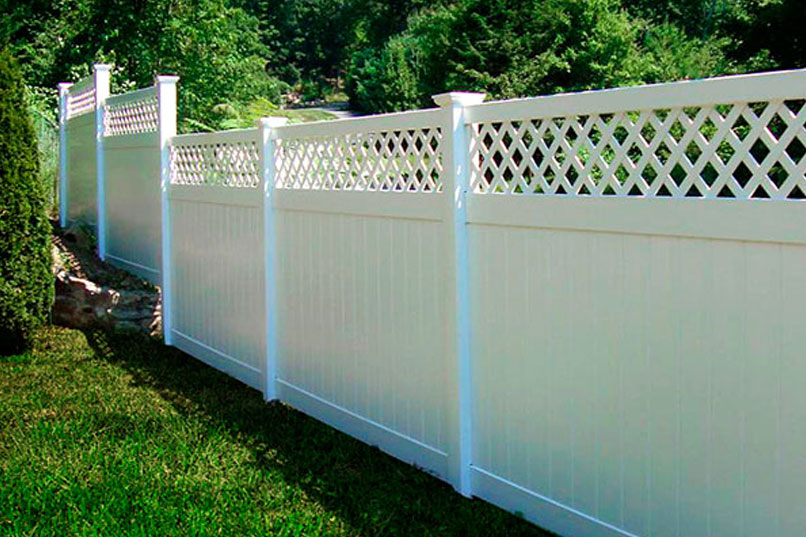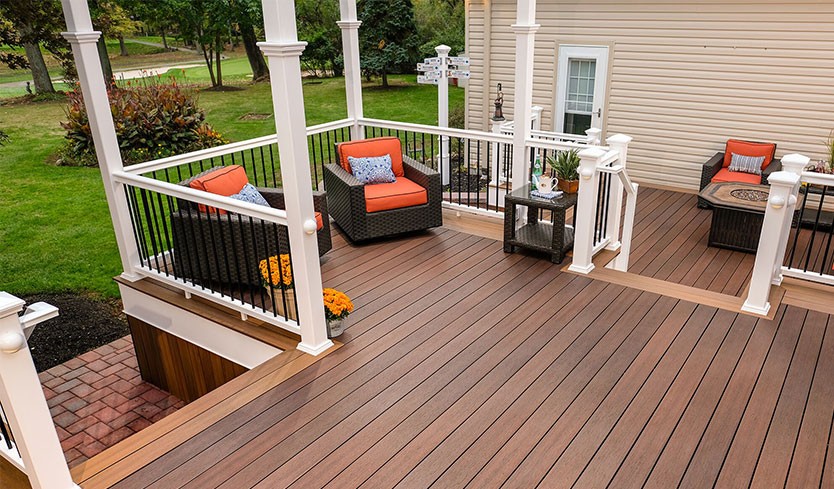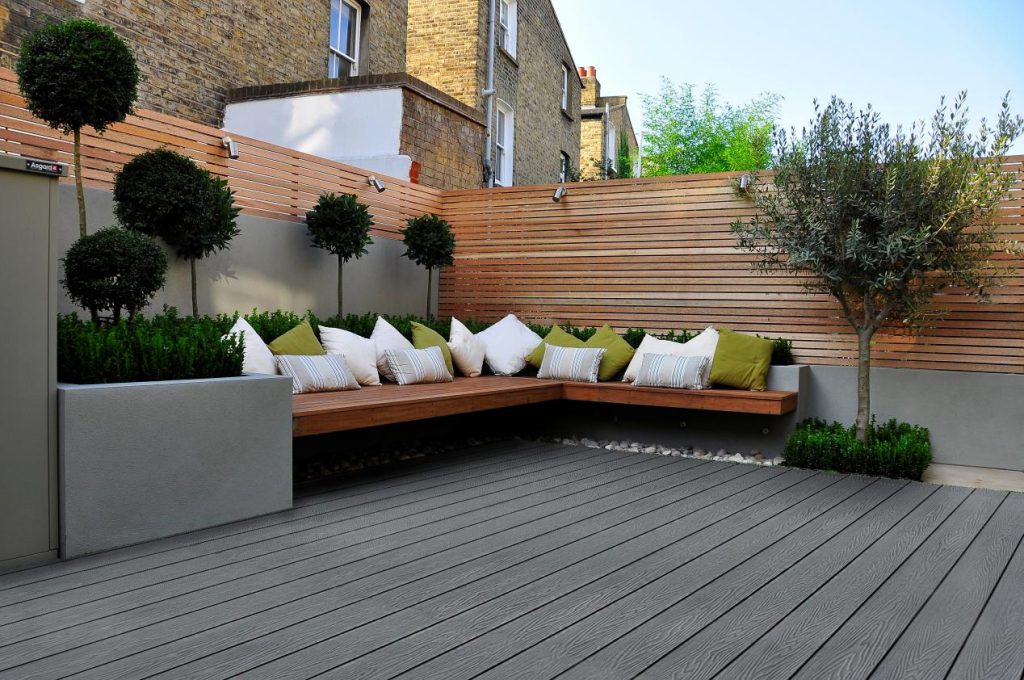When it comes to creating a stylish, low-maintenance, and durable outdoor boundary, composite fencing installation has become a top choice among homeowners, contractors, and landscape designers. Unlike traditional wood fencing, which requires frequent staining and repair, composite fence panels combine recycled wood fibers and plastics to offer an elegant appearance that lasts for decades with minimal upkeep.
Table of Contents
In this comprehensive guide, we’ll walk you through everything you need to know about composite fence installation — from preparation and tools to cost, maintenance, and design tips. Whether you’re planning a DIY project or hiring professionals, understanding the process will help you achieve a flawless, long-lasting fence.
What Is Composite Fencing?
Before diving into the composite fence installation process, it’s essential to understand what composite fencing is and why it has become so popular.
Composite fencing is made from a blend of wood fibers and recycled plastic materials, typically high-density polyethylene (HDPE). This hybrid material gives the fence the natural texture of wood with the durability and resistance of plastic.
Key Benefits:
Low Maintenance: No painting, sealing, or staining required.
Weather Resistant: Withstands UV rays, moisture, and temperature changes.
Eco-Friendly: Made from recycled and sustainable materials.
Long Lifespan: Can last 20–30 years with proper installation.
Stylish Appearance: Comes in a wide variety of colors, wood tones, and textures.
Because of these advantages, composite fence panels are ideal for residential backyards, garden boundaries, pool enclosures, and even commercial properties.

Planning Your Composite Fencing Installation
Successful composite fencing installation starts with proper planning. Here are the essential steps to prepare before you begin:
a. Check Local Regulations
Before purchasing materials, check your local building codes or homeowner association (HOA) rules. Some areas may have height restrictions or require permits for fence installation.
b. Measure Your Area
Measure the total length of your fence line and determine the number of composite fence panels you’ll need. Always include a few extra panels to account for mistakes or irregular spaces.
c. Choose Your Fence Style
Composite fencing comes in various designs:
Horizontal Slats: Modern and sleek.
Vertical Boards: Classic and traditional.
Shadowbox Panels: Offer privacy with airflow.
Decorative Tops: Add elegance to your yard.
Selecting the right design ensures your fence complements your property style.
d. Gather Tools and Materials
To install composite fencing, you’ll need:
Fence posts and panels
Concrete mix (for securing posts)
Level and tape measure
String line and stakes
Power drill and screws
Post caps and brackets
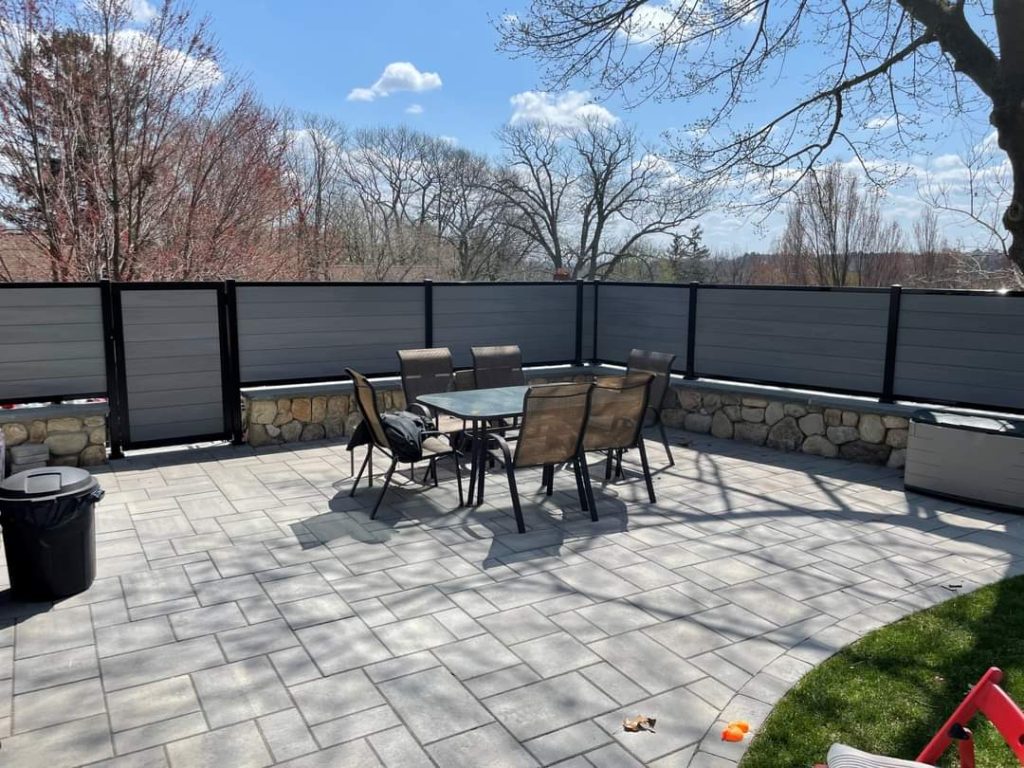
Step-by-Step Guide to Composite Fence Installation
The composite fence installation process is straightforward but requires attention to detail. Below is a general step-by-step guide:
Step 1: Mark the Fence Line
Use a string line to mark where your fence will go. Drive stakes into the ground at each corner and stretch the line tightly to create a visual guide for post alignment.
Step 2: Install Fence Posts
Fence posts provide structural support for your composite fence panels. Properly installed posts ensure stability and longevity.
Dig post holes approximately 600–800 mm deep (about 1/3 of the total post length).
Pour concrete into the bottom of the hole for stability.
Insert the post and use a level to make sure it’s vertical.
Allow the concrete to cure for at least 24 hours before continuing.
Spacing between posts should match the width of your composite fence panels, typically around 6 to 8 feet.
Step 3: Attach Fence Rails (if applicable)
Some composite fencing systems use horizontal rails that connect posts before panels are installed. These rails add strength and alignment to the structure.
Step 4: Install Composite Fence Panels
Once the posts and rails are secure, it’s time to install your composite fence panels.
Slide the panels into place between posts or onto rails.
Secure them using manufacturer-recommended brackets or screws.
Ensure that panels are level and evenly spaced.
If your fencing system uses tongue-and-groove panels, they will easily interlock without visible gaps.
Step 5: Add Post Caps and Finishing Touches
Complete your composite fence installation by adding post caps, decorative trims, or lighting fixtures. This step not only enhances appearance but also protects post tops from moisture.

Composite Fence Panels Installation Tips
Here are a few expert tips to ensure your composite fence panels installation is smooth and long-lasting:
Use stainless steel screws or coated hardware to prevent corrosion.
Allow expansion gaps — composite materials can expand and contract with temperature changes.
Install panels above ground level to prevent contact with soil and water buildup.
Follow manufacturer instructions for specific systems — each brand may have unique brackets or spacing requirements.
Check levels frequently — even minor misalignment can cause the fence to look uneven.
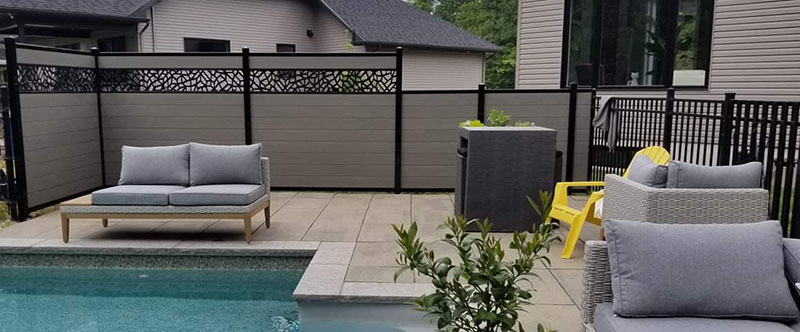
Composite Fence Installation Cost
The composite fence installation cost depends on several factors, including material quality, design complexity, and labor. Below is a general breakdown to help you estimate your budget.
a. Material Costs
Composite Fence Panels: $40–$80 per linear foot
Posts and Accessories: $20–$50 per piece
Concrete and Screws: $10–$20 per post
b. Labor Costs
If you choose professional installation, labor typically adds:
$25–$50 per linear foot, depending on region and project difficulty.
c. Total Estimated Cost
For a standard 100-foot fence, the composite fence installation cost may range from $4,000 to $9,000 including materials and labor.
While this may be higher than wood fencing, the long-term savings from minimal maintenance and longer lifespan make it a cost-effective investment.
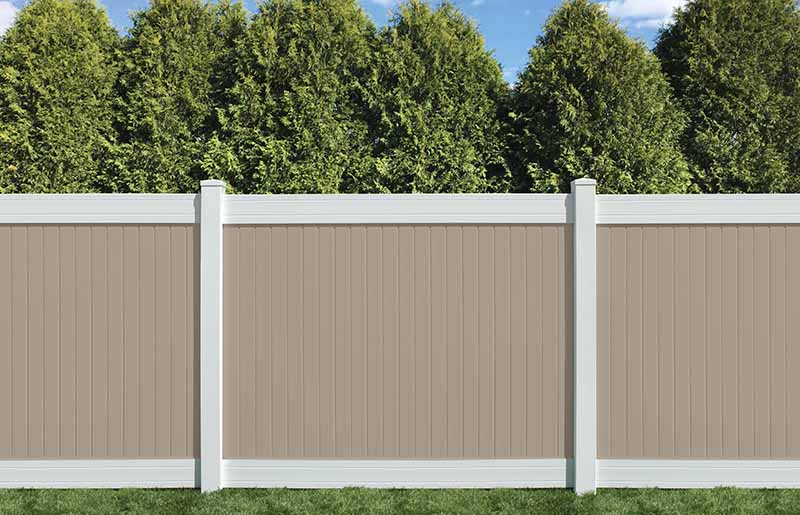
DIY vs. Professional Composite Fence Installation
When deciding whether to handle the installation yourself or hire professionals, consider the following:
DIY Composite Fence Installation
Pros:
Lower cost
Personal satisfaction
Flexible timing
Cons:
Time-consuming for beginners
Requires specific tools and measurements
Risk of mistakes affecting fence stability
Professional Composite Fence Installation
Pros:
Quick and precise installation
Guaranteed workmanship
Often includes warranty coverage
Cons:
Higher upfront cost
If your yard has slopes, uneven terrain, or custom design needs, professional installation is often worth the investment.
Environmental Benefits of Composite Fence Panels
If sustainability matters to you, composite fence panels installation is a smart choice.
Recycled Materials: Most panels use up to 95% recycled wood and plastic.
Reduced Deforestation: Less demand for natural timber.
Long Lifespan: Fewer replacements mean less waste.
Non-Toxic Surface: No need for chemical treatments or paints.
Choosing composite fencing is a small step toward a greener, more sustainable home environment.
Design and Color Options
Composite fencing is available in numerous shades and patterns, allowing customization for your outdoor space.
Popular Colors:
Charcoal gray
Espresso brown
Cedarwood
Ash black
Natural oak
Design Enhancements:
Combine composite fence panels with aluminum frames for a modern contrast.
Use horizontal panels for contemporary aesthetics.
Add lighting fixtures or climbing plants for ambiance.
With so many options, composite fence installation can transform your yard into a private, elegant, and low-maintenance retreat.
Common Mistakes to Avoid During Installation
Even experienced DIYers can make errors when installing composite fencing. Here are a few pitfalls to avoid:
Skipping post alignment checks — leads to uneven fences.
Neglecting drainage — standing water near posts can weaken foundations.
Over-tightening screws — may crack composite material.
Ignoring temperature expansion — panels may warp or buckle.
Incorrect panel spacing — can cause visual imbalance and structural issues.
Careful planning and attention to detail ensure your fence looks and performs perfectly for decades.
Comparing Composite Fence Installation with Other Materials
| Material | Lifespan | Maintenance | Cost | Aesthetic |
|---|---|---|---|---|
| Wood | 10–15 years | High | Low | Natural |
| Vinyl | 20–25 years | Low | Moderate | Clean, modern |
| Metal | 25–40 years | Moderate | High | Industrial |
| Composite | 25–30 years | Very Low | Moderate–High | Wood-like & modern |
The chart clearly shows that composite fencing strikes an excellent balance between beauty, durability, and sustainability, making it the best long-term investment for most homeowners.

Final Thoughts
A well-planned and properly executed composite fencing installation can dramatically improve your home’s appearance, privacy, and property value. With its durable structure, eco-friendly materials, and minimal maintenance requirements, composite fence panels are a practical upgrade from traditional wood or vinyl options.
Whether you’re a DIY enthusiast or prefer professional help, understanding every step of the composite fence installation process — from choosing panels to estimating cost — ensures a smooth, rewarding experience.
So if you’re ready to redefine your outdoor space with elegance and strength, start planning your composite fence installation today. It’s an investment that combines style, sustainability, and long-term performance — all in one beautiful fence. Want to get more? Welcome to contact Hosung!

